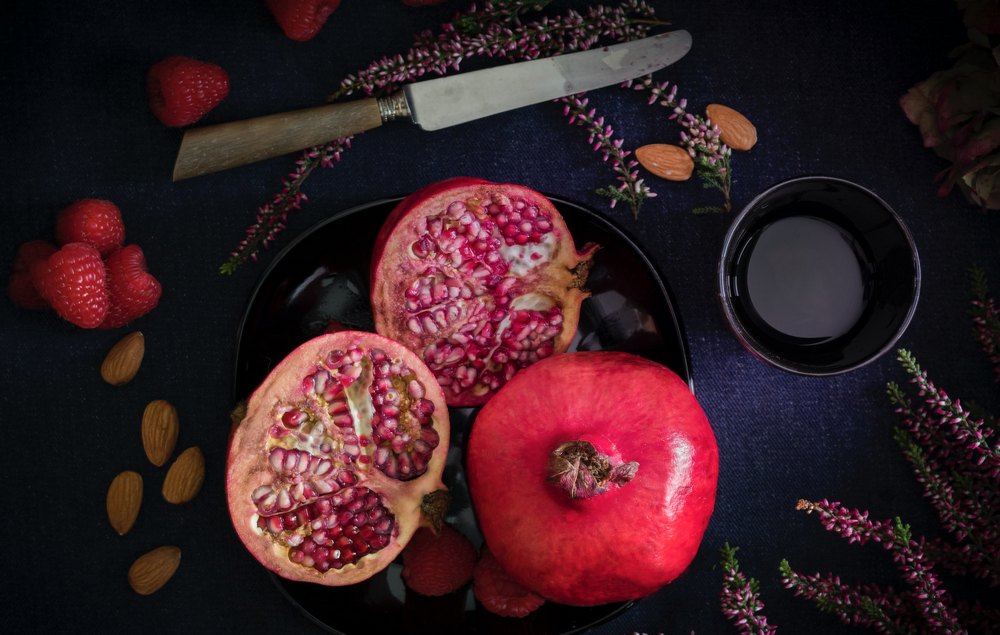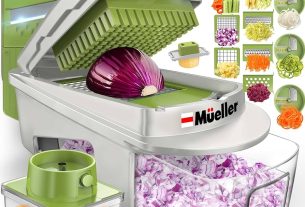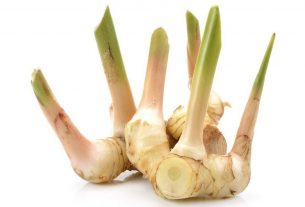Long seasons of cold winter and fall could bring a kind of mixed feelings sensation, but one thing is certain in the United States, it means the pomegranate season. Between September and the new year, pomegranates are almost available everywhere within the country and this sweetness feeling that will be missed from February will be very much available.
In that case, how can pomegranate season be extended? Can the seeds be frozen? You can freeze the seeds of pomegranate and if done properly, pomegranate seeds freeze quite excellently. The first thing you will have to do is to open up your pomegranate and proceed to freeze the arils (the fruit-flesh that individually covers the seeds).
What we want to achieve in this guide is to show you how you can properly prepare your pomegranate seeds so that you can freeze them and how you can defrost them for you to use any time of the year that you want.
Can Pomegranate Seeds Be Frozen and How
When you want to freeze pomegranate seeds, they have to be first rinsed and dried, then you should use parchment paper to line your baking sheet and spread the seeds in single layers making sure they do not touch each other. For them not to clump together into a large ball, it is preferable freezing each of the arils individually. They should be allowed to be frozen between 30 minutes and one hour. Once frozen, pack them in a Tupperware container or freezer-safe Ziploc container or bag and ensure that air is kept out as much as possible so that ice crystals will not form around or on the seeds.
How Long Can You Keep Pomegranate Seeds in the Freezer?
You can extend the juicy and bright flavor of fresh pomegranate by freezing them but they will start losing the richness of the flavor after about six months. It is recommended they are taken before then. You can keep fresh seeds of pomegranate or the thawed that was previously frozen in the fridge for up to a week, though they must be well sealed.
Can you freeze a pomegranate whole?
An entire pomegranate can be frozen but the main secret of freezing is to protect it from moisture and air. There is much moisture and natural air inside the pomegranate fruits and this could affect the seeds’ quality when unthawed. The nice outer coverage of pomegranate does not protect it from moisture and air. You could get into mess if you try to freeze an entire pomegranate. Pomegranate is a fruit you have to take your time to prepare properly before you freeze.
How To Defrost Pomegranate Seeds
It is very easy to thaw frozen pomegranate seeds. Remove them from the freezer still in the bag or container and leave them on a counter at room temperature. They defrost quite quickly because the seeds are individually small. Defrosting should be done within 30 minutes and one hour, depending on the fullness of the bag or container. You can also put the container inside lukewarm water (not hot please) to speed the process up if you are rushing. You would not need to defrost your pomegranate seeds if you are going to use them for a smoothie or you want to bake with them. You could use your pomegranate frozen. You could also use frozen arils to cool in hot summer.
Alternative Ways to Store Pomegranate Seeds
Your whole pomegranate can be left on a counter for around a week after they were bought before they start to show wrinkles and then become soft. The pomegranate can be kept whole in your fridge for about three weeks. This is dependent on when they were picked. Ensure to seal the seeds in a Ziploc bag or airtight container. Using a glass airtight container works best because the seeds could be a bit moist and it could cause harmful toxins if plastic leach into the fruit. As long as you properly seal them, pomegranate seeds can stay fresh inside the fridge for about one week. If you want to feel a little German, you could use the pomegranate arils for making a Rum Pot by covering the pomegranate arils in sugar before soaking them inside rum to ferment and interestingly preserve them.
How to Tell if Pomegranate Seeds Have Gone Bad
It is very obvious when pomegranate seeds have gotten spoilt, you will notice the off odor and they will also begin to rot. The arils of the pomegranate should normally be juicy and plump but if you notice they are mushy, too slimy and slippery to handle, then they have gone bad. Your pomegranate fruit should have an inside that is lovely and rich pink, in case you notice a brown color, the pomegranate may have begun to rot.

How To Cut Pomegranate
Pomegranate could get messy and very frustrating despite being delicious if you do not know how you can properly cut them. You have to get the following to get your pomegranate prepared:
- Your wooden spoon
- Your sharp small paring knife
- Your small bowl that can be used to throw the pulp and outer casing away
- Your large bowl that will be used to collect the pomegranate seeds.
Follow the steps below to prepare:
- Try to find the top of the pomegranate, the blossom end that is opposite the bottom end cut from its tree.
- Score a circle at the top where it begins to curve downwards with the knife.
- Remove the top and discard it.
- You will notice a white pulp that divides the fruit into segments.
- Score another area around length with the knife from the top to around 1” away from its bottom.
- Score each segments and hold your pomegranate facing down with the top opened over the large bowl.
- Use the wooden spoon to tap on the outside, each segment so that the seeds (arils) are released into the bowl.
If you feel it is too tasking to do, you can get the pomegranate deseeder to do it for you.
How to Eat Pomegranate Seeds
The little rich kernels found in the pomegranate are sometimes referred to as seeds but in the real sense, they are called arils. Each aril contain a seed within it. You can proceed to eat the arils once you have extracted them from the pomegranate. It is safe to eat the seeds but other people spit it out because it is hard. Check out some other ways you can use pomegranate in your meals:
- Sprinkled on cheesecake, ice cream or other desserts
- Cooked together with any favorite grain like spicy curried rice or creamy risotto.
- Tossed together with salads used for lunch.
- Add to smoothies and juice.
- Add to cold or hot cereal
How to Make Pomegranate Juice
You can easily make pomegranate juice by scooping your arils in a juicer if you have the machine. If you have a very good juicer, the seeds will be separated and you will only be left with your sweet juice.
In case you do not have the juicer, it is still easy to make the juice. Use a spoon or a fork to crush the arils in a mesh strainer. The juicy and soft arils will be squished easily and your seeds or any other white membrane lingering will be caught by the mesh.
Benefits of Pomegranate Seeds
Pomegranate seeds have a lot of delicious and nutritional benefits. They have a bright color that is rich in antioxidants that can keep you from diseases like common cold and cancer. Pomegranates beat green tea and red wine to be the fruit with the highest antioxidant concentration. Pomegranates are good vitamin C source that helps the immune system. They also contain vitamins K and E and some other essential minerals. Pomegranates help to protect the body from viruses, diabetes, heart disease, Alzheimer’s, and arthritis. Pomegranate could also help to improve sex life, boost stamina and endurance, improve memory, and lower blood pressure.
Pomegranate Extract vs Juice
It is quite difficult to choose either the entire fruit, supplements, juice, or extract because pomegranate offers a whole lot of nutrition. The best taste could come from eating the arils or drinking the pomegranates juice.
Related Questions
Pomegranate vs cranberry: which is better?
Cranberries and pomegranate are both highly delicious and nutritional, if you find yourself having both options, then you are in a good position to enjoy. Depending on what your health concerns are, they both have features that distinguish them and one may be more appealing to you than the second one.
Considering the weight, pomegranates contain a higher content of vitamin C. They also have vitamin B9 and it means that pomegranates are the best choice to help the body’s red blood cells and the immune system. If, however, you want to take medication that will lower the blood pressure, you should thread with caution because pomegranates can do that to the extreme.
Cranberries contain higher fiber content than pomegranates, making them excellent for the digestive system. Cranberries also have high antioxidant content called quercetin that is used often to prevent heart diseases, control your blood sugar, and kill cancer. It is an anti-inflammatory. Cranberries contain a high level of vitamin K that functions for blood clotting.
Are pomegranates seeds good for dogs?
If you give your dogs correctly, pomegranates are safe for them. It has to be in a moderate dose and the best thing is to separate the seeds from the skin and proceed to crush before feeding the pets. The seeds could be choking for some certain dogs, so please tread with caution. If you give the dog a large fiber-rich food dose that they are not familiar with, it could cause a digestive problem, just like in humans.
Where are pomegranates grown?
They are known to originate from Northern India and in Iran. For several thousand years, pomegranates have continuously been grown in South Asia, the Middle East, and the Mediterranean. Some farmers in Arizona and California, the dryer states have been reported to cultivate the fruits in recent times.
How much pomegranate juice should I drink a day?
You have to begin with a very small amount if you are only just starting to take vegetables, juices, or fruits so that the digestive system can adjust to it. To get health benefits, taking five ounces is significant per day. Most of the fruit juices (pomegranate inclusive) are high in sugar and calories, if you are watching your sugar and calories, you may have to look for 100% purity of pomegranate juice so that you will avoid additives including sugar.
How to tell when a pomegranate is ripe?
Check for a large bright red color to get whether or not it is ripe because most of the pomegranates in the United States are of the red variety. Check the shape when you are considering pink, white, or other pomegranate variety. You will notice a hexagonal shape and the fruit will be a bit heavy.


